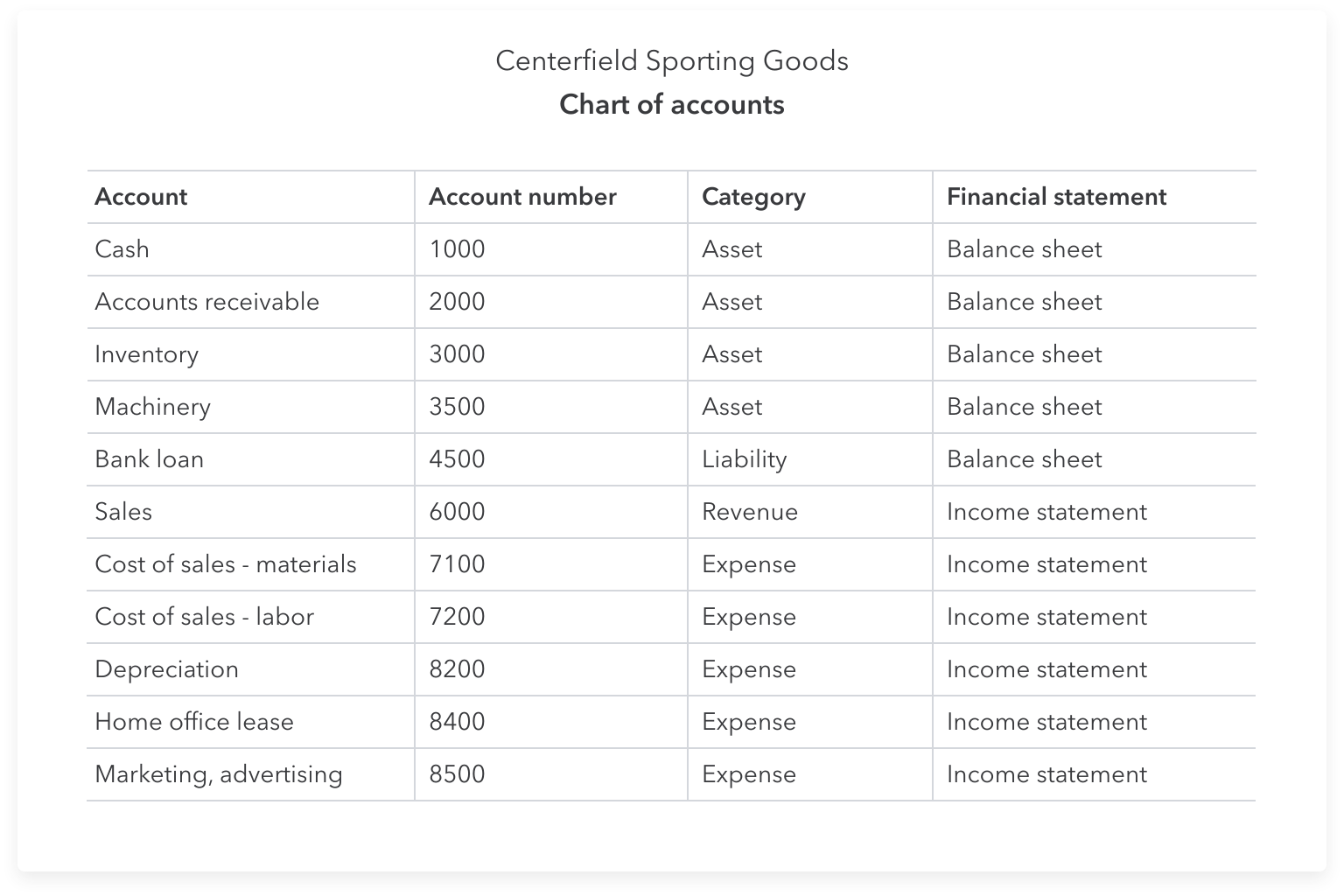
This would include your accounts payable, any taxes you owe the government, or loans you have to repay. Asset accounts can be confusing because they not only track what you paid for each asset, but they also follow processes best cash back business credit cards of november 2021 like depreciation. That doesn’t mean recording every single detail about every single transaction. You don’t need a separate account for every product you sell, and you don’t need a separate account for each utility.
Double Entry Bookkeeping

Liability accounts usually have the word “payable” in their name—accounts payable, wages payable, invoices payable. “Unearned revenues” are another kind of liability account—usually cash payments that your company has received before services are delivered. A chart of accounts gives you a clear picture of how much money you owe in terms of short- and long-term debts. Your COA can help you determine how much of your monthly income you can afford to put toward your debts and help you develop longer-term debt repayment plans.
How confident are you in your long term financial plan?
You can also examine your other expenses and see where you may be able to cut down on costs if needed. A chart of accounts is an important organizational tool in the form of a list of all the names of the accounts a company has included in its general ledger. This list will usually also include a short description of each account and a unique identification code number. This content is for information purposes only and should not be considered legal, accounting, or tax advice, or a substitute for obtaining such advice specific to your business.
How to Do Bookkeeping For Shopify – Essencial Shopify Bookkeeping Guide
Incorporating the Maker Checker Workflow adds an additional layer of accuracy and control by implementing a dual-approval process for all entries and adjustments made to the COA. This method significantly mitigates the risk of errors and fraud, reinforcing the reliability of the financial data. By adhering to these best practices, you can maximize the utility of your chart of accounts, enhancing both financial transparency and decision-making capabilities within your organization. The structure of a COA can be customized to fit the specific needs of a business.
At the same time, the government came up with stricter regulations on how they should keep their finances in order. That inspired the idea of having a standardized way of keeping financial records. Organizations began creating their own lists, called charts of accounts, to categorize and organize their financial transactions systematically. This way, it was easier to follow the rules and regulations set by the government. Another benefit was a more comprehensive view of the business’s finances. We often call the assets, liabiliies and equity accounts the balance sheet accounts, as they participate in forming a company’s balance sheet.
- On one hand, keeping the number of accounts to a minimum will make the accounting system more straightforward to use.
- Similarly, if you use an online program that helps you manage all your accounts in one place, like Mint or Personal Capital, you’re looking at basically the same thing as a company’s COA.
- COA organizes financial data into a structured format that can be easily accessed, analyzed, and reported.
- If you keep your COA format the same over time, it will be easier to compare results through several years’ worth of information.
It’s a process that requires regular updates, including the addition of new general ledger accounts (G/L) and creation of varied financial statement versions (FSVs). The chart of accounts in SAP S/4HANA Cloud is flexibly designed, a significant advantage. By customizing and regularly updating their chart of accounts, organizations ensure that it evolves in sync with their business.
It often follows a pattern where the first digit represents the major category, and subsequent digits provide more detail. Expenses are subtracted from revenue to calculate net income – the company’s profit or loss in the period in question. Operating expenses are the costs needed to run a business day-to-day, for example, rent and salaries. Non-operating expenses are not that directly tied to running the business. Equity is the ownership value in a company, determined by subtracting liabilities from assets.
There are a few things that you should keep in mind when you are building a chart of accounts for your business. Besides the renumbering and renaming of newly set up G/L accounts, you can also rename and renumber existing G/L accounts in your production system, as long as they have zero postings. Members of the accounting team can view existing G/L accounts and FSVs in the production system. They do this by using specific applications from the SAP Fiori launchpad, such as the Manage G/L Account Master Data app for G/L accounts and the Manage Global Hierarchies app for managing FSVs. In the following sections, we will explore the procedures for maintaining charts of accounts under different scenarios.



